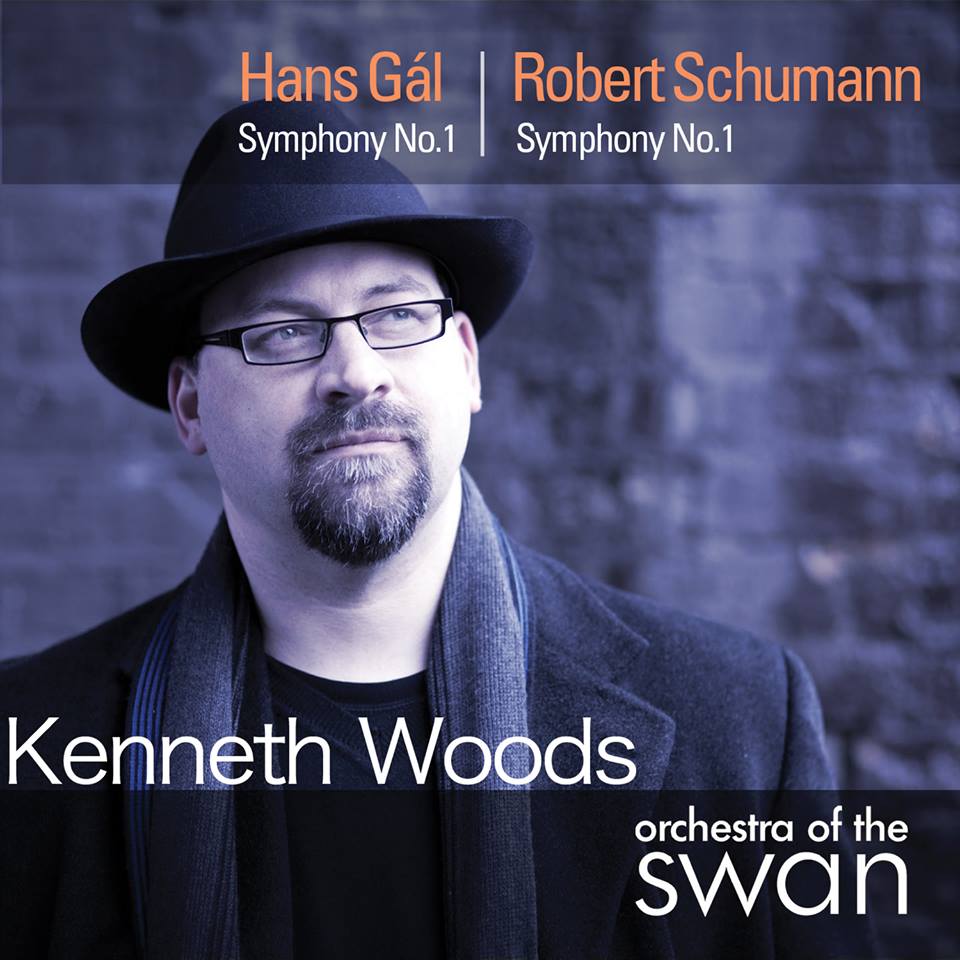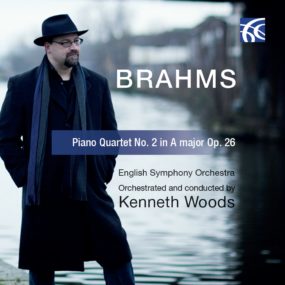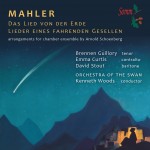Description
![]() Philip Sawyers has established himself as one of today’s most compelling symphonists. Ken’s recording of Sawyers’s Second Symphony with the Orchestra of the Swan was a 2014 MusicWeb Recording of the Year, and his recording of the Third Symphony was a Gramophone Critics’ Choice as one of the Best Recordings of 2017.
Philip Sawyers has established himself as one of today’s most compelling symphonists. Ken’s recording of Sawyers’s Second Symphony with the Orchestra of the Swan was a 2014 MusicWeb Recording of the Year, and his recording of the Third Symphony was a Gramophone Critics’ Choice as one of the Best Recordings of 2017.
Sawyers’ Fourth Symphony is a dramatic score tracing a powerful journey from darkness to light, while his large Symphonic Poem, Hommage to Kandinsky has been hailed as “A masterpiece for the 21st Century”
“The eagerly awaited Fourth (2018) is in three, structured not unlike Bruckner’s Ninth (or even Harold Truscott’s solitary Symphony): a highly dramatic opening Moderato in B flat followed by a fleet-footed Presto scherzo in F which reworks – even reinvents – material from the first span, and a sombre but ultimately luminous and serene concluding Adagio in D minor, again with thematic cross-connections to the preceding movements (and some other Sawyers scores). Just as vital to the musical and expressive flow, however, is his orchestration, beautifully realised here by the BBC NOW and Sawyers’s champion, Kenneth Woods… Hommage to Kandinsky is a terrifically vivid and, again, brilliantly orchestrated score…The performance is again wonderfully realised, the orchestra relishing the many opportunities to shine. Praise, too, for the technical engineering by Simon Fox-Gál.” Guy Rickards, Gramophone
Five Stars. “Philip Sawyers’ standing as one of the most compelling symphonic composers to emerge in recent years owes much to the determined advocacy of conductor Kenneth Woods…the Symphony is a thrilling exercise in orchestral colour cast in three tightly integrated movements. Witness the imposing, and not a little intimidating, opening statement where rumbling stabs of stentorian brass force their way through the stygian gloom of bass drum and timpani into the glimmering twilight of high woodwinds and low strings….Echoes of Bruckner at his most dramatically portentous, of Vaughan Williams at his most lyrically intense, are apt indicators of Sawyers’ richly executed language, taut, tense and threaded together with aching poetry… Lit up by remarkable details in every section of the orchestra, the concentrated middle movement is as fleet as it is dense…. the concluding Adagio is an elongated elegy studded with moments of transcendent beauty. Struggling purposefully into a glowing, sonorous resolution of all that has come before, it caps a symphony of immense stature from a master craftsman at his peak.”
“Hommage to Kandinsky may well be Sawyers’ masterpiece. Emboldened by enlarged orchestral forces, it carries itself with a glowing elemental force worked out in vivid writing as bracing as it is baleful, as powerful as it is poetic.”
“Woods’ corralling of the superbly engineered, firing-on-all-cylinders BBC National Orchestra of Wales – playing with telling sweep and detail – serves Sawyers’ music throughout with illuminating, note-perfect brilliance.” Michael Quinn, Limelight Magazine
“The emergence of Sawyers as a major symphonist of his generation has been among the more significant aspects of latter-day British music…. impressively assured readings by the BBC National Orchestra of Wales and Kenneth Woods… It will be fascinating to hear just where Sawyers goes from here on his eventful symphonic odyssey.” Richard Whitehouse, Arcana FM
“A #21stCenturySymphony and symphonic poem so spectacular, confident and emotionally compelling that it’s inspired me to write a #SymphonistOfTheWeek thread as well!…Listening again to this movement early this morning gave me goosebumps the like of which I haven’t felt with a piece of new music in a long, long time. It seems I’m not the only one.” Adam Philp, The Symphonist
“From the pen of Philip Sawyers (a Londoner born in 1951), these are quite the best two pieces this composer has yet given us…Symphony No.4 (2018) opens in arresting style, a bold summons that bids our involvement in some very strong symphonic argument and varied emotions…placed last is an expansive Adagio, with motivic connections to what has gone before, of haunting intimate expressivity countered by waves of intense fortissimo, and the soaring conclusion wraps the whole convincingly… The half-hour Hommage to Kandinsky (2014), written for the Grand Rapids Symphony, is equally impressive…from misty opening to a troubled ending; listener-interest never flags. Like the Symphony, Hommage to Kandinsky is scored with consummate skill (Kandinsky is for the larger forces) to which the BBC National Orchestra of Wales responds with relish and sensitivity, led by Kenneth Woods with typical flair and compassion.” Colin Anderson, Classical Source
“Here we have two significant and eloquent new works. Both display command of the orchestra and an imaginative mind at work. Both of these compositions require concentrated listening but they will reward the listener for his or her efforts. The more I hear of Philip Sawyers’ music, the more impressed I am. Here, he receives ideal advocacy from the BBC National Orchestra of Wales, whose playing is expert and committed. In Kenneth Woods this composer clearly has a formidable champion; under his direction the performances exude conviction.” John Quinn, MusicWeb International
“Sawyers’ Fourth Symphony develops further the assured symphonic technique already evident in its predecessors , and consolidates his position as a major symphonist of our time…The large finale begins as a profound, tragic funeral march, the intensely moving heart of the work, now revealing that all the furious energy of the preceding movements was merely prologue. The music continues in sombre but lyrical vein until the funeral march blasts back onto the scene, heralding a long, surging move toward major key tonalities and the hard-won resolution of a blazing coda. Sawyers employs his very large Romantic orchestra to depict bold shapes in highly contrasted blocks of color, linked in structures with a sense of energetic motion, as in Kandinsky’s teeming canvases. The work’s turbulence and energy might seem surprising for an evocation of feelings aroused by abstract modern art, but this points to Sawyers’ appreciation of Kandinsky’s unique qualities – no retiring pastel watercolorist this! – and the elevation to heroic, epic stature of the subjects of Richard Strauss’ tone poems is frequently called to mind.” Records International
“Kenneth Woods is in his element with this kind of music, and the excellent musicians of the BBC National Orchestra of Wales are cleanly and spaciously recorded. Indeed, sound quality is an improvement on the English Symphony Orchestra’s recordings of Sawyers’s Second and Third Symphonies. Most importantly, both works (particularly the symphony) deserve repeated, careful listening. To paraphrase Gavin Dixon in his review of Symphony No. 3 (Fanfare 41:3), tradition’s future looks bright.” Phillip Scott, Fanfare
“…an exciting, vibrant symphonic poem as colourful as the Russian painter’s abstract art with the orchestra and Woods revelling in its rich textures and intense emotional sweep. Sawyers’ three-movement Symphony No.4 (2018) employs smaller forces and has a tense, dramatic and densely-argued first movement and ends with a serenely beautiful Adagio. Excellent playing and recording quality to match.” Norman Stinchcombe, Birmingham Post/Midlands Music Reviews
“Phenomenal! Discover masterful, massive orchestral music by a gifted composer, in line with the greats of the 20th century…Symphony No. 4 (2018) opens with strong symphonic pulses that evoke diverse emotions, followed by a shadowy Scherzo. Finally, a sprawling Adagio, with motivic references to what has sounded before. Frightening, soft and intimate expressiveness is, as it were, counteracted by waves of intense fortissimo. A discovery! The recording, made in the Hoddinott Hall of the orchestra in Cardiff, is excellent. The impressive orchestral sound has an impact and the recording conductors have achieved an impressive dynamism that makes the many colors and details of Sawyer’s score beautifully differentiated. Cannot be missed!” Michel Dutrieue, Stretto (Belgium) [Translated from Dutch original]
“The tone poem is a strong piece, clearly structured and ultimately a song of praise about Kandinsky’s colourfulness….His three-movement Fourth Symphony is… very dramatic and thematically characteristic…Kenneth Wood[s] is a highly motivated interpreter who, as a committed advocate of this music, ignites a fire of unbridled passion in it, while at the same time providing architectural clarity so that one can fully experience the complexity of the works.” Remy Franck, Pizzicato (Luxembourg)
“You know that powerful emotion you get, that goosebump inducing rush you feel when music generates an uplifting and well-attained upshot. That’s precisely what I experience every time I hear the intense coda of the expansive Adagio third movement which concludes the Symphony No. 4 by British composer Philip Sawyers… And for me it’s not just the mighty and powerful impact of the final chords that does it, but rather how the music got there … how the conflicting ideas get resolved in the end, or how all of the smaller, less significant building blocks end up producing such an impressive edifice. Conductor Kenneth Woods and the BBC National Orchestra of Wales perform this “new” music as if it were a long established standard of the repertoire. Highly nuanced orchestration details are manifest, and a firm control on forward momentum is always apparent. Great sound and unwavering playing throughout. Tip of the hat to Nimbus Alliance for travelling down this uncharted road.” Jean-Yves Duperron, Classical Music Sentinel



Charles Hines –
Great single movement work. Do approach 3 Choirs committee. That and others need some airing. I loved the textures towards the end. Chs
Admin –
From Classical Lost and Found
https://www.clofo.com/Newsletters/C200930.htm
The album cover may not always appear.
Sawyers: Sym 4, Hommage to Kandinsky (symphonic poem); K.Woods/BBCWalNa [Nimbus]
RECOMMENDED (1 CD)
London-born Philip Sawyers (b. 1951) began playing the violin at 13, and started writing music shortly thereafter. He’s since become another promising British composer like his younger compatriot Robin Stevens (b. 1958), whom we told you about last month (see 31 August 2020).
Both attended the Dartington College of Arts in Devon, England, and subsequently, Sawyers has produced a notable number of works across most genres. These include four symphonies, and Nimbus has already released his well-received First (2004; see NI-6129), highly acclaimed Second (2008; see NI-6281), as well as the Third (2016; see NI-6353), which was a Gramophone Magazine “Critics’ Choice” back in 2017.
Now they give us the Fourth (2018) coupled with one of his earlier, large-scale, symphonic poems, these being the only versions currently available on disc. The album booklet has prolix comments by both the composer and conductor regarding both works, so we’ll just hit the high points in the following commentary.
The Symphony is atypically in three movements, the first being a “Moderato” (“Moderate”) marked, sonata-form-like one [T-1]. It has a brass, timpani-bass-drum punctuated preface [00:03] that calls up a perky, piquant motif from the oboe (PP) [00:22], followed by the first violins playing a related, twelve-tone-like, lyrical theme (PL) [00:27]. These ideas give way to a contrapuntally spiced development [00:45], where various keys battle with one another and call up a dynamic recapitulation [08:47]. The latter has a big-tune reminder of PL [09:32], which parents a tragic coda [10:16] that closes the movement despairingly.
A mercurial scherzo is next [T-2] with outer “Presto” (“Very fast”) episodes [00:00 & 06:12] based on a scampering, melodic inversion of PL (PS) [00:00]. Both have waltzlike as well as fugal segments, and surround a PS-related, “Moderato” (“Moderate”) trio [04:34-06:11]. Then the movement ends excitedly with a “più moss” (“more lively”) [09:47] last thought.
The final “Adagio” (“Slow”) [T-3] starts with a somber funeral march [00:01], which waxes [03:28] and wanes [03:59] into a serenade-like episode. This has a PP-PL-reminiscent, wistful idea (PW) introduced by the winds [04:22] that’s soon lyricized by the first violins [05:48].
Then the foregoing is suddenly followed by a couple of forte, drum-pounding, aggressive sections [07:13 & 08:37] with recurring references to PW. These ebb into a chorale-like version of PW [10:49], which turns triumphant with memories of past ideas, and is succeeded by a PP-based coda [14:48] that concludes the Symphony exultantly.
From what the composer tells us, it seems the seeds for his symphonic poem titled Hommage to Kandinsky (2014) were planted back in 2006, when he attended a “Kandinsky: The Path to Abstraction” exhibition at the Tate Modern Gallery of Art in London. Then with the commissioning of a new work from him by the Grand Rapids Symphony (GRSO) located in Michigan, USA, this piece blossomed forth! Incidentally, his First Symphony (see above) was also written for the GRSO.
Russian-born Wassily Kandinsky (1866-1944) pioneered abstract art, and judging from what Sawyers says, this music expresses his emotional responses to the paintings, rather than being programmatic depictions of them. Structurally speaking, it’s similar to Richard Strauss’ (1864-1949) symphonic poems (1886-1915), and scored for a large orchestra (see the album notes).
This music is theme-and-variations-like. Moreover, after a somber, pianissimo introduction (SI) [T-4, 00:02], we get a binary main subject, having an audacious, march-like, first idea (AM) [01:15], which was apparently inspired by Wassily’s “Composition IV” (1911), and then a related, lyrical second (AL) [02:07].
A variety of treatments follow, ranging from contemplative [02:44] to martial [03:59], whimsical [04:32], flowing [05:10], songlike [05:41], scampering [08:11] and mysterious [09:31]. These are succeeded by belligerent [11:30], peaceful [14:32], as well as distraught [17:23] ones Then there’s a scherzoesque number [19:23], which transitions into a remembrance of SI [21:38] and an extended reworking of AM [22:50].
This bridges into AL-like passages [25:41] with a last hint of AM on the oboe [26:44], followed by a fortissimo, drumroll-reinforced, brass outburst [26:59]. Then like fresh paint on a canvas drying and fading, the latter wanes away thereby ending the work tranquilly.
Outstanding performances by the BBC National Orchestra of Wales (BBCWalNa) under American-born, UK-resident conductor Kenneth Woods make a strong case for Sawyers’ music. Moreover, Maestro Woods’ careful phrasing, expressive, dynamic shadings and well-judged tempos bring out all the subtleties in these superbly crafted works.
Produced last January in association with the BBC and BBCWalNa, the recordings took place at Hoddinott Hall in Cardiff, Wales, some 130 miles east of London. They project a wide, but somewhat withdrawn sonic image in spacious, affable surroundings, and the orchestral timbre is characterized by pleasant highs with some bright spots, but an acceptable midrange. As for the low end, it goes down to rock bottom; however, the bass drum is a bit boomy. Everything considered, while the overall sound is serviceable, it won’t win any “Audiophile” awards.
— Bob McQuiston, Classical Lost and Found (CLOFO.com, P200928)